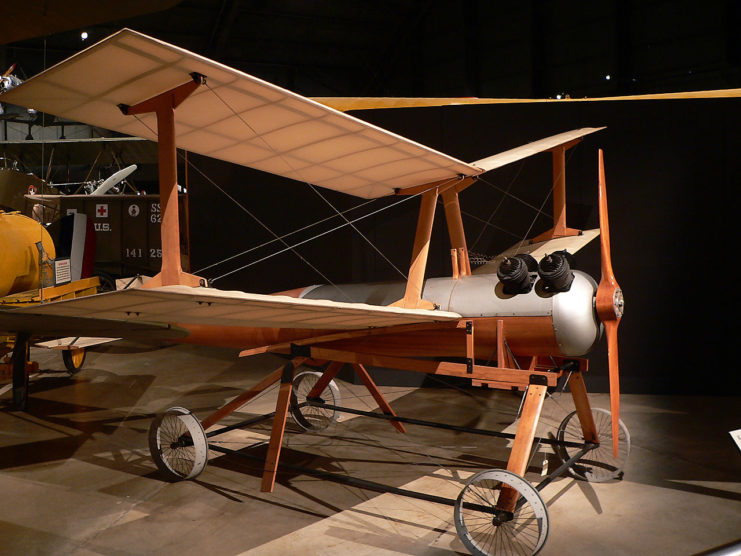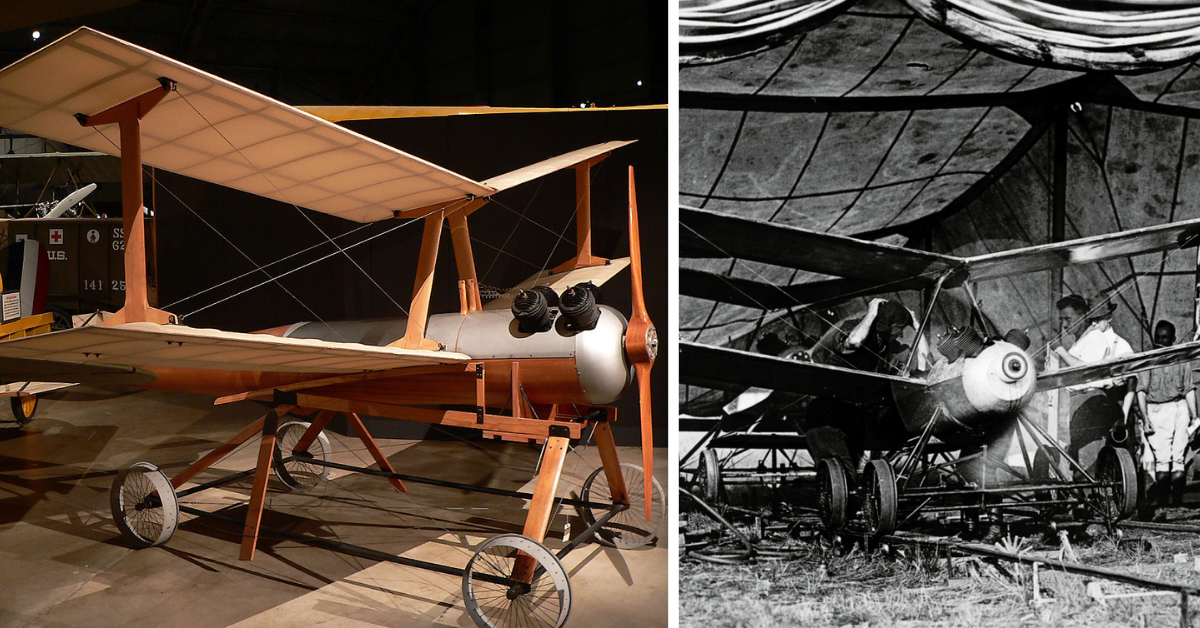Today, drone technology is a critical component on the battlefield and is evolving at a rapid pace. There are many that believe it is only a matter of time until humans will no longer be needed to fight wars. It seems unmanned vehicles like the Global Hawk drone are a new technology, but surprisingly, the US first flew an unmanned aerial vehicle over 100 years ago, with the Kettering Bug.
Background
The development of such a machine began in WWI, when the US Army asked American inventor Charles Kettering to design a flying bomb, one that could fly without a pilot. Little more than a decade after man first took flight, WWI had become host to a major aerial arms race. Germany and Britain, among others, had made massive leaps in aircraft design in just four years.
When the war started the only air combat was between reconnaissance aircraft, with crews literally throwing objects at each other while traveling no faster than 70 mph. By the end of WWI, dedicated fighters were able to reach 150 mph while carrying multiple belt-fed machine guns synchronized to fire through the propeller.
The US may not have made such large strides, but they created something equally impressive with their unmanned aerial vehicle.
The Kettering Bug

The Kettering Bug looks like a relatively conventional aircraft, but it’s actually a flying bomb, a precursor to the modern-day cruise missile.
The designer of the Kettering Bug had previously founded the Dayton Engineering Laboratories Company, better known as Delco. Delco was a leading manufacturer of electronic systems in automobiles and was eventually bought out by General Motors.
After the US entered WWI in 1917, Kettering’s genius was sought after.
Kettering was tasked with designing a flying bomb capable of hitting a target 40 miles away. Orville Wright, the man credited with taking to the skies for the first time, was a consultant for the project. In addition, Elmer Ambrose Sperry was set to work designing a guidance system for the machine. Sperry was the founder of the Sperry Corporation, which was a pioneer in aviation electronics and instruments, like the ball turrets used on WWII bombers.
What they created was a small 3.8-meter long biplane, with a wingspan of 4.5 meters. The wings were made of cardboard while the fuselage was made of wood and paper-mâché. A four-cylinder engine that produced 40 hp powered the contraption, which could cruise at 50 mph. In total it weighed just 530 lbs, including 180 lbs of explosives.
The Bug operated like an early V1 flying bomb. It was launched from a dolly-and-track system. Once in the air, the Bug was guided to the target by a remarkable pneumatic and electrical system aided by a gyroscope and altimeter.
Before the launch, the Bug’s operators would establish the wind speed, its direction, and the distance from the target. When this was known, they would then calculate the number of times the engine would rotate on its way to the target. After the predetermined revolutions were complete, the engine shut down and the wings were detached, allowing the explosive-filled fuselage to fall to the ground via gravity.
In theory, this was much more effective than artillery rounds, which carried fewer explosives over a shorter distance.
Did it see use?
Although the capabilities of this device were fantastic on paper, it never saw service. Unsurprisingly the Kettering Bug’s complexity meant it was unreliable. A prototype of the Bug arrived for testing near the end of WWI, first flying on October 2, 1918. After it took off the Bug nosed up and stalled, falling back down to Earth and crashing. In the following series of tests, the Bug actually performed okay on a number of occasions, but this was not enough for it to be considered a weapon ready for war.
On its way to the target, the Kettering Bug would pass over friendly lines; not a good idea when the aircraft is carrying 180 lbs of explosives and has questionable reliability. There were 45 Kettering Bugs built in total, and investigation into the Bug continued into the early 1920s.
Although it seems rather primitive today, the Kettering Bug is an important milestone in both warfare and aviation. In fact, this small little aircraft remained classified until WWII.
A full-size replica of the Bug can be seen at the National Museum of the United States Air Force (pictured above) in Dayton, Ohio.
